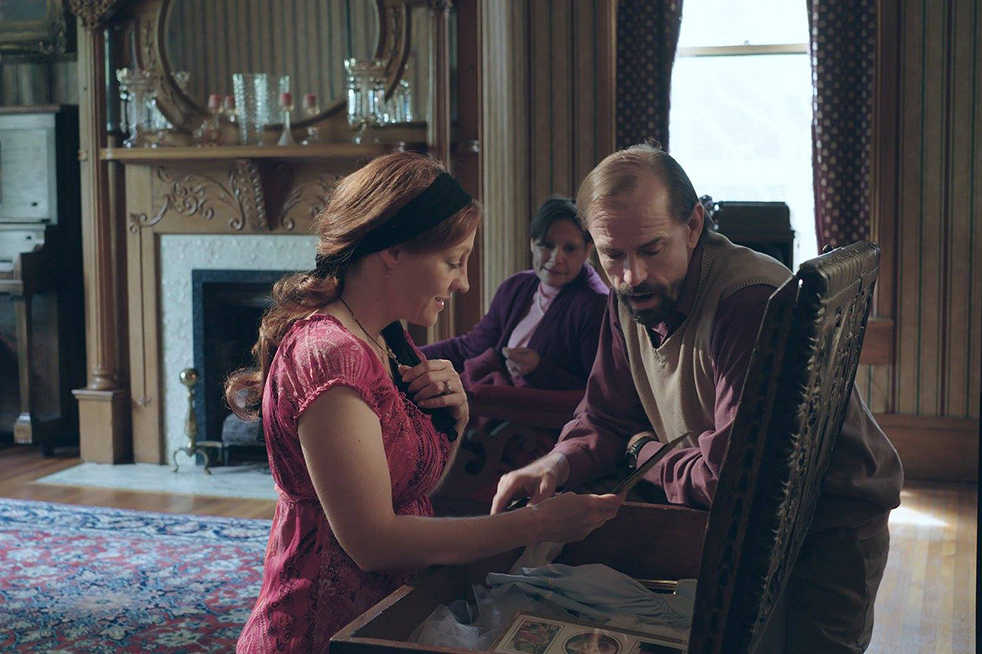The winner of Best Story, Best Directing and Best Lyrical Music at the Faith Film Fest 2015, “Providence” is a redemptive love story told in a silent cinema style, but it has a more indie feel, featuring an eclectic blend of music by independent artists tied together by cinematic scoring. The dramatic film will be releasing in theatres Feb. 14 with director, Fred Wilharm, and writer and director, Sharon Wilharm, in attendance at the 6:30 p.m. screening at the AMC Barrett Commons in Kennesaw, Ga.
A love story 40 years in the making, the dramatic opening scene begins when Rachel Cartwright’s beloved Grandma Rose dies, leaving a painful void in her young life. The pain is made worse when Edith, Rachel’s mother, tosses the Bible given to Rachel by Grandma Rose. Young Mitchell Little purchases the Bible from a thrift store and as a result, embarks on a journey towards a life of ministry. Rachel, on the other hand, spends her time searching for unconditional love like she had with Grandma Rose.
Throughout high school and adulthood, Rachel and Mitchell find themselves drawn together by tragedies then separated by misunderstandings and insecurities. It takes forty years before the two can finally work through the confusion of their lives and connect as soulmates.
The expansive story of “Providence” spans from 1974, when Rachel receives the Bible as a Christmas present, to 2014, when she receives it again, this time as part of a proposal.
The movie stars Emily Knapp (“The Good Book”), Stacey Bradshaw (“Touched by Grace”) and Juli Tapken (“Mission Improbable”) as Rachel throughout the years and Chase Anderson (“Where Hope Grows”), Josh Allen (“Home Sweet Bus”) and Rich Swingle (“Beyond the Mask”) as Mitchell through the years. Irene Santiago (“High School Musical”, “Iron Man 3”) manages to pull off an impressive feat, portraying the various ages of Edith throughout the movie. The movie’s soundtrack includes an impressive collection of instrumentals by Sean O’Bryan Smith as well as original indie vocal titles.
The Technique had the privilege to interview the film’s writer and director, Sharon Wilharm.
Technique: What is the message you hope to achieve in “Providence”?
Wilharm: “Providence” is a story of hope, that it’s never too late to find love. Our desire is that it will speak to and encourage anyone who is feeling discouraged and alone or who’s waiting and wondering if love will ever come to them. It’s also a story of second chances, that despite the mistakes we may have made in the past, there’s still hope for the future.
Technique: What did you hope to achieve by using the style of silent cinema?
Wilharm: “Providence” is actually our second silent cinema film. When we did our first one, “The Good Book,” our goal was to avoid cheesy dialogue by literally showing rather than telling. We also realized that without dialogue it could transcend cultural and language barriers. We had no idea how people would respond, but “The Good Book” became a festival darling, gathering almost 40 accolades in festivals around the world.
The idea of “Providence” was conceived a number of years, but as we discussed the technicalities of doing a movie that spanned forty years, we concluded it would be logistically impossible. Surprisingly, after doing “The Good Book”, we realized that the “Providence story” worked better as a silent film. We have three actors for each of the two leading roles and without dialogue; it helps for them to seamlessly blend together into one character.
Technique: With the lack of dialogue, is there any room for interpretation of the meaning of the film?
Wilharm: Definitely! Viewers fill in the dialogue in a way that makes sense to them. It’s interesting when people talk about what the movie is about, they interpret it in uniquely different ways. That’s what makes it special. “Providence” is a simple love story, but it has a lot of different layers so viewers are going to pick up on whichever layer speaks to them personally.
Technique: So much of silent film is driven by the music. What is the genre of the music chosen for this film?
Wilharm: We try to take advantage of the resources that we have and create films that only we can tell in a way that only we can tell it. Living in Nashville, we have access to an incredible selection of amazing talent. Our music supervisor Sean O’Bryan Smith works with musicians of every genre and so we told him we wanted an eclectic soundtrack with an indie feel. And that’s what we’ve got. The soundtrack includes jazz, pop, gospel, rock, a little country and a lot of acoustic guitar. We primarily have Nashville songs and musicians, but we also ended up with a Canadian artist and an Australian artist as well.
Technique: Where can audiences preview the music?
Wilharm: The entire playlist is on the “Providence” IMDb page under “Did you know? Soundtrack.” Also, we produced music videos for many of the songs. They include artist performance footage intercut with scenes from the movie. The music videos can be found on the “Providence” website, www.providencemovie.com.
Technique: Do you have any plans for future films of this type?
Wilharm: As much as we enjoy doing silent films, I think we’ve exhausted it for now and are looking forward to doing a “talkie” next.
Technique: What is your next project?
Wilharm: I’m working on a new script that is completely different than anything we’ve attempted before. It is a period piece taking place in the 1930’s. I’m looking forward to making period costumes and my husband is looking forward to the period autos.
